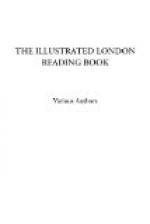[Illustration: COIN OF TYRE.]
As for the siege, it was brought to a termination in this manner: Alexander had permitted his main body to repose themselves after the long and severe fatigues they had undergone, and ordered only some small parties to keep the Tyrians in play. In the meantime, Aristander, his principal soothsayer, offered sacrifices; and one day, upon inspecting the entrails of the victim, he boldly asserted among those around him that the city would certainly be taken that month. As it happened to be the last day of that month, his assertion was received with ridicule and scorn. The King perceiving he was disconcerted, and making it a point to bring the prophecies of his minister to completion, gave orders that the day should not be called the 30th, but the 28th of the month; at the same time he called out his forces by sound of trumpet, and made a much more vigorous assault than he at first intended. The attack was violent, and those who were left behind in the camp quitted it, to have a share in it and to support their fellow-soldiers, insomuch that the Tyrians were forced to give out, and the city was taken that very day.
LANGHORNE’S Plutarch.
* * * * *
THE FALLS OF NIAGARA.
[Illustration: Letter T.]
The river Niagara takes its rise in the western extremity of Lake Erie, and, after flowing about thirty-four miles, empties itself into Lake Ontario. It is from half a mile to three miles broad; its course is very smooth, and its depth considerable. The sides above the cataract are nearly level; but below the falls, the stream rushes between very lofty rocks, crowned by gigantic trees. The great body of water does not fall in one complete sheet, but is separated by islands, and forms three distinct falls. One of these, called the Great Fall, or, from its shape, the Horse-shoe Fall, is on the Canadian side. Its beauty is considered to surpass that of the others, although its height is considerably less. It is said to have a fall of 165 feet; and in the inn, which is about 300 yards from the fall, the concussion of air caused by this immense cataract is so great, that the window-frames, and, indeed, the whole house, are continually in a tremulous motion, and in winter, when the wind drives the spray in the direction of the buildings, the whole scene is coated with sheets of ice.




